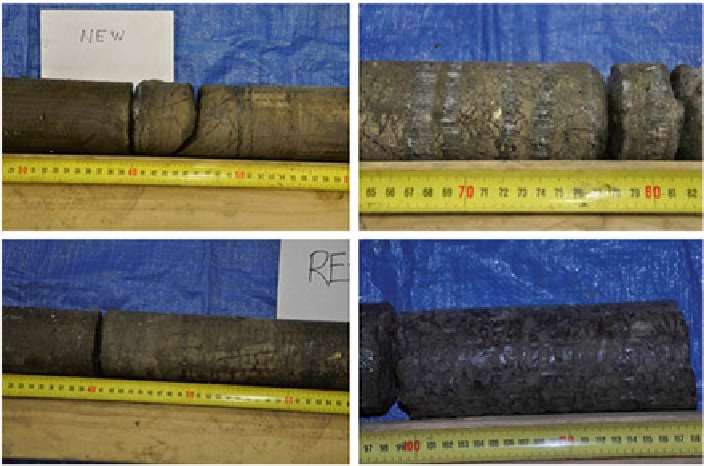Geoscience Reference
In-Depth Information
Fig. 2.8
Forms of excess ice in cores from drained thaw-lake basins in arctic Alaska, including
vein ice (
upper left
), lens ice (
upper right
), reticular ice (
lower left
), and atataxic ice (
lower right
)
(Bockheim and Hinkel
2012
)
The transition layer displays many of the same properties as the active layer, includ-
ing high amounts of segregated ice, cryoturbation, and abundant soil organic
C. Permafrost represents a condition in which a material remains at or below 0 ᄚC
for 2 or more years in succession. Permafrost may be over 1,500 m thick in central
Siberia. Dry-frozen permafrost is a peculiar form of permafrost that occurs in hyper-
arid regions of Antarctica. The nature of segregation ice in permafrost is important
for determining its mechanism of formation.
References
Alekseev A, Alekseeva T, Ostroumov V, Siegert C, Gradusov B (2003) Mineral transformations in
permafrost-affected soils, north Kolyma Lowland. Russia Soil Sci Soc Am J 67:596-605
Anisimov OA, Shiklomanov NI, Nelson FE (1997) Global warming and active-layer thickness:
results from transient general circulation models. Global Planet Change 15:61-77
Bockheim JG (1995) Permafrost distribution in the Southern Circumpolar Region and its relation
to the environment: a review and recommendations for further research. Permafr Periglac
Process 6:27-45
Bockheim JG (2007) Importance of cryoturbation in redistributing organic carbon in permafrost-
affected soils. Soil Sci Soc Am J 71:1335-1342
Bockheim JG, Hinkel KM (2005) Characteristics and significance of the transition zone in
permafrost-affected soils of the Arctic Coastal Plain, Alaska. Arctic 58:406-417

